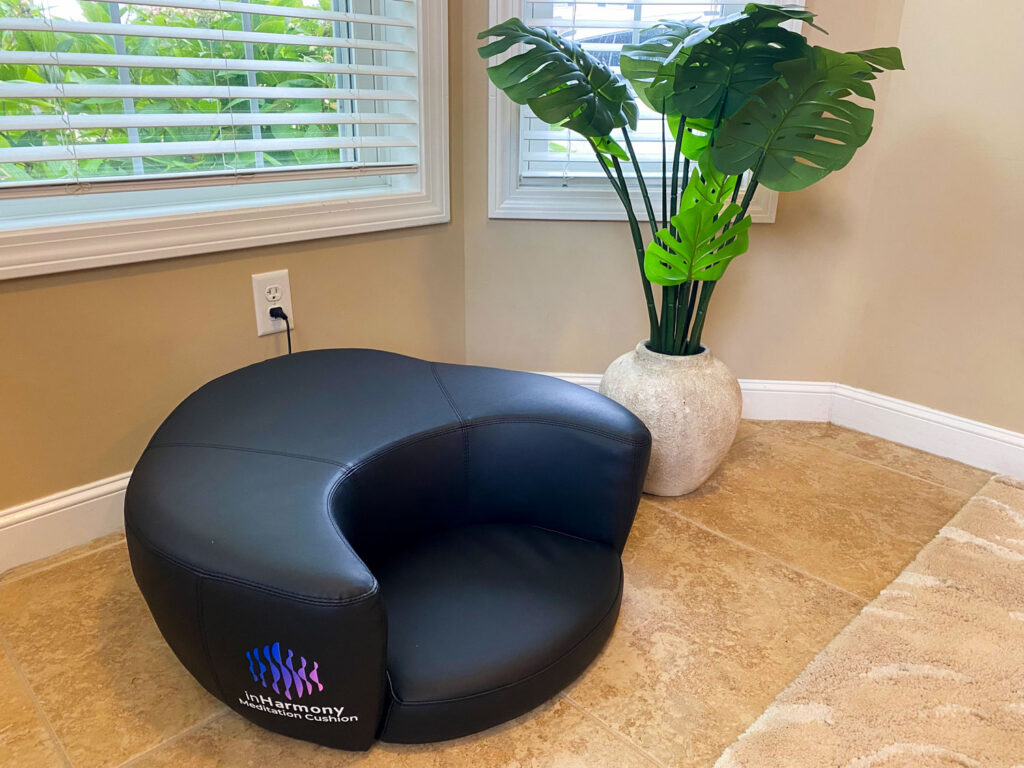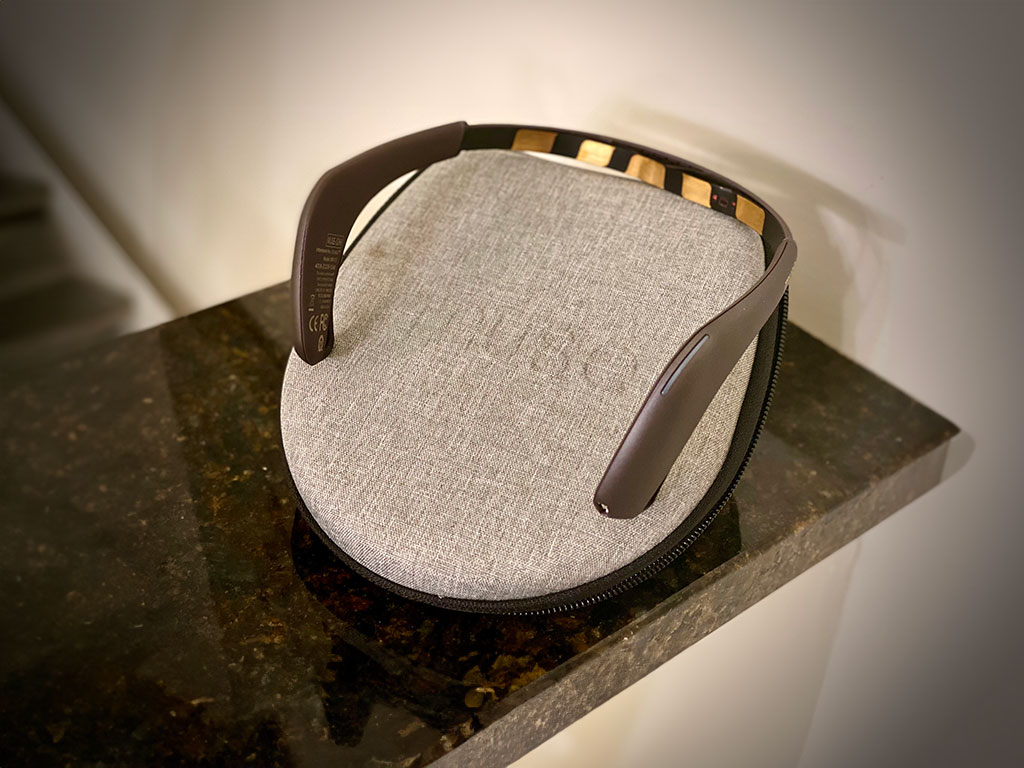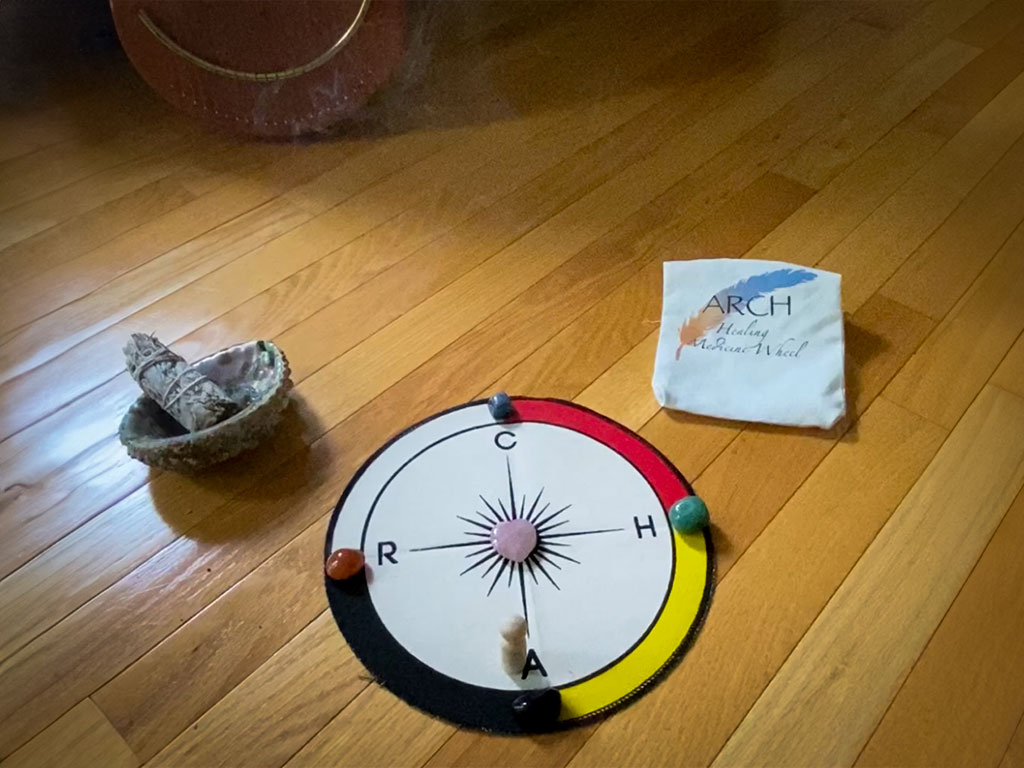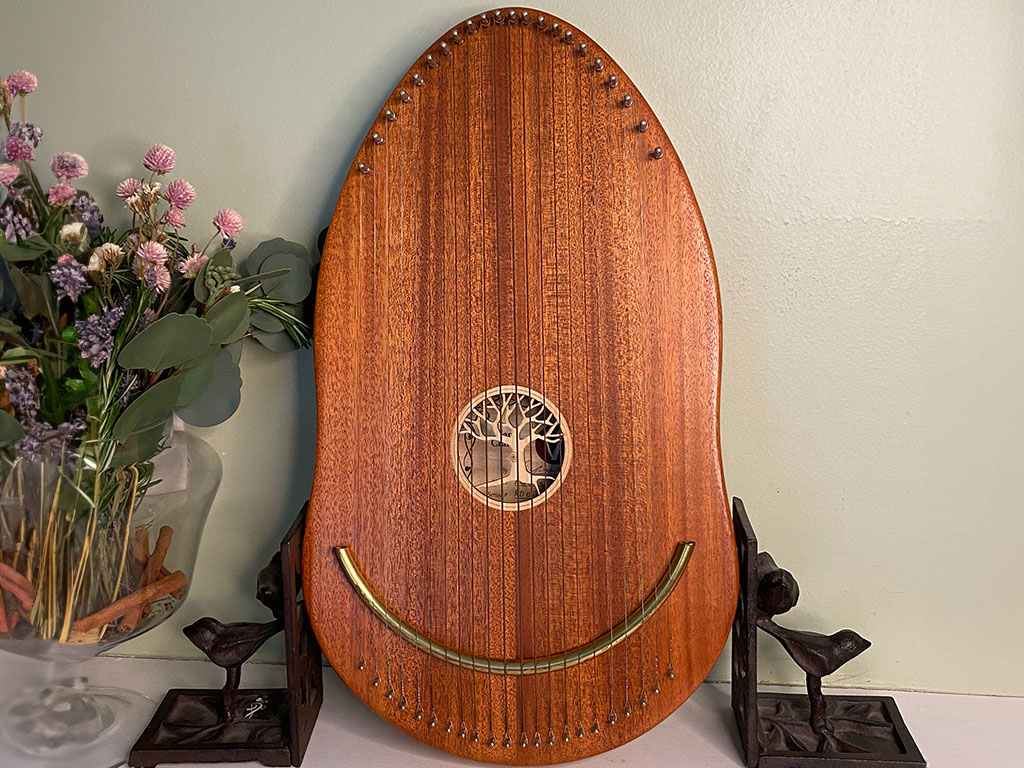How Ashwagandha, Shatavari, and Maca Help Modern Women Regain Balance and Pleasure
Introduction
Women in midlife (age ~ 35 and older) commonly undergo hormonal shifts associated with perimenopause and menopause, compounded by stress, which can lead to dysregulation of the hypothalamic–pituitary–gonadal (HPG) and hypothalamic–pituitary–adrenal (HPA) axes. Common symptoms include mood swings, fatigue, low libido, sexual dysfunction, sleep disruption, and increased cardiovascular or bone risks. Many women avoid or cannot take synthetic hormone replacement therapy (HRT) due to contraindications or side effects (e.g. breast cancer risk, cardiovascular risk) and thus turn to complementary or herbal therapies.
In this context, maca, shatavari, and ashwagandha are three botanicals often proposed to support hormonal balance, libido, mood, vitality, and stress resilience. However, the clinical evidence is still limited, particularly in women in the midlife or menopausal transition. This review aims to summarize known phytochemistry, proposed mechanisms, and human (and animal) evidence for each herb, highlight any clinical trials in women (especially aged ≥ 35), compare potential benefits vs synthetic hormone therapy, and point out gaps, limitations, and safety considerations.
Phytochemistry and Mechanisms of Action
Maca (Lepidium meyenii)
Phytochemistry.
Maca is a cruciferous root (member of the Brassicaceae) cultivated in the Peruvian Andes. Its root contains glucosinolates, macamides and macaenes, sterols, polyphenols, alkaloids, and other secondary metabolites. Some literature suggests that compounds unique to maca, such as “macamides,” may mediate central nervous system or endocrine effects (e.g. via endocannabinoid pathways) (e.g. systematic review, MDPI) MDPI. However, the precise bioactive compounds and their pharmacokinetics in humans remain poorly characterized.
Proposed mechanisms.
-
It is hypothesized that maca has an indirect androgenic effect (i.e. not by raising testosterone directly, but by modulating the LH/FSH feedback or receptor sensitivity) in women. In some small studies, maca supplementation in postmenopausal women was associated with decreases in FSH levels and increases in LH levels (suggesting altered gonadotropin feedback) PMC+2MDPI+2.
-
Alternatively, maca’s libido-enhancing effects might be mediated centrally (neurotransmitter modulation) rather than via altering serum sex hormones. In fact, in the Dording et al. trial, maca increased sexual function without detectable changes in estrogen, testosterone, or gonadotropins PMC+2Memorial Sloan Kettering Cancer Center+2.
-
Additional proposed mechanisms include antioxidant, adaptogenic, and possibly modulation of nitric oxide or vascular tone.
Shatavari (Asparagus racemosus)
Phytochemistry.
Shatavari is a climbing plant whose root is used in Ayurvedic medicine. Known constituents include steroidal saponins (shatavarins), mucilage, flavonoids, alkaloids, and polysaccharides Wikipedia+2PubMed+2. Some of the saponins and glycoside fractions may have phytoestrogenic activity, i.e. binding weakly to estrogen receptors or modulating estrogen pathways.
Proposed mechanisms.
-
Phytoestrogenic (estrogen modulatory) action: some compounds may act as weak estrogen receptor agonists or modulators, thereby ameliorating estrogen deficiency symptoms (e.g. vaginal dryness, hot flashes).
-
Adaptogenic/anti-stress: by mitigating cortisol response and oxidative stress, shatavari might indirectly support hormonal balance via less interference from chronic stress.
-
Mucilaginous and trophic effects on the reproductive tract: in Ayurvedic tradition, shatavari is considered to nourish and tonify “maternal” tissues; in modern interpretation, it might support vaginal mucosa or fertility milieu.
-
Anti-inflammatory and antioxidant effects, which can help reduce inflammatory dysregulation associated with estrogen deficiency.
Ashwagandha (Withania somnifera)
Phytochemistry.
Ashwagandha is a well-known Ayurvedic herb. The roots and leaves contain withanolides (steroidal lactones such as withaferin A), alkaloids (e.g. withanine), sitoindosides, flavonoids, and other constituents. The root-based extracts are most commonly studied. PMC+3Wikipedia+3Nutritional Medicine Institute+3
Proposed mechanisms.
-
Adaptogen and HPA-axis modulation: Ashwagandha is classically used as an adaptogen — i.e. it may attenuate stress-induced hyperactivation of the HPA axis, lowering cortisol and restoring balance. In a well-cited RCT, supplementation of a standardized root extract at 600 mg/day for 60 days significantly reduced perceived stress and serum cortisol compared to placebo (P < 0.0001) in adults under chronic stress (n=64) PMC.
-
Anti-inflammatory and antioxidant effects: withanolides have been shown to reduce oxidative stress and inflammation in vitro and in vivo, which could ameliorate menopause- or stress-driven tissue damage.
-
Indirect sex hormone modulation: some trials in men and women have suggested that ashwagandha may modestly increase DHEA-S, free testosterone, or other androgen precursors, though not consistently or robustly (see below) Taylor & Francis Online+4PMC+4Nutritional Medicine Institute+4.
-
Neurotransmitter modulation: ashwagandha may influence GABAergic, serotonergic, or other neuromodulatory systems, contributing to improved mood, sleep, or anxiolysis.
In sum, while maca may act more on libido/sexual axes, shatavari may carry weak estrogenic modulation, and ashwagandha acts more as a stress-modulating adaptogen (with some ancillary hormonal effects). The three herbs are sometimes combined, with potential synergy (e.g. shatavari + ashwagandha in menopausal support trials) Frontiers+1.
Clinical Evidence in Women: Effects on Female Health, Mood, Libido, Vitality, Hormonal Symptoms
Below I review human and some animal/observational studies for each herb, focusing especially on women in midlife or menopause or with hormonal dysregulation.
Maca (Lepidium meyenii)
Sexual function / libido in women.
-
In a double-blind, placebo-controlled trial in 45 women (mean age ~41.5 y, range including pre- and postmenopausal) having SSRI/SNRI-induced sexual dysfunction, 3 g/day of maca for 12 weeks resulted in greater remission rates (ASEX score ≤10: 9.5% maca vs 4.8% placebo; MGH-SFQ ≤12: 30% vs 20%, and ≤8: 9.5% vs 5%) PMC+1. The study also observed more improvement in postmenopausal subgroup.
-
In a dose-finding pilot RCT, maca (1.5 g vs 3.0 g) improved libido (ASEX #1) from baseline 4.9 ± 1.1 to 3.6 ± 1.6 (z = –2.19, P = .028) in the intent-to-treat sample (n = 16) PMC.
-
A systematic review of maca for sexual function found limited evidence: from four small RCTs (n ranging 8–57) maca may improve sexual desire with ≥6–12 weeks use; but the studies had risk of bias, small size, and inconsistent methodology (e.g. poor description of randomization, blinding) BioMed Central.
-
The Memorial Sloan Kettering Cancer Center notes that maca may improve antidepressant- and menopause-induced sexual dysfunction, though evidence is limited and conflicting, and some studies show no hormonal changes as a correlate Memorial Sloan Kettering Cancer Center.
Mood, energy, vitality.
-
Some studies and anecdotal reports suggest that maca may increase energy, mood, or reduce fatigue. For instance, a 2016 trial of 175 participants (at low vs high altitude) taking 3 g/day of red or black maca for 12 weeks showed improved mood and energy vs placebo Healthline.
-
In the MDPI review, maca’s improvement of libido is considered supportive of CNS or endocrine modulation, but the authors note that evidence remains preliminary and mechanistic pathways are speculative MDPI.
-
However, a broader review (e.g. WebMD) cautions that there is no strong medical evidence to firmly support maca for female sexual dysfunction or mood disorders at present WebMD.
Menopausal or hormonal symptoms.
-
Some human studies (e.g. small open-label trials) report that maca may reduce menopausal symptoms such as hot flashes and improve general well-being, though again data are limited and not always controlled.
-
Because maca does not appear to significantly change measured estrogen or testosterone levels in many trials, its potential benefit may lie in symptom modulation rather than direct hormone replacement.
Safety.
-
Trials generally report maca as well tolerated, with few reported adverse events (e.g. mild gastrointestinal discomfort).
-
One case report indicated that maca may interfere with testosterone immunoassays, so caution is warranted in interpreting hormonal lab tests in users of maca PMC+1.
-
No reports of serious adverse events in the controlled trials reviewed to date.
Conclusion on maca.
Overall, maca shows modest evidence (based on small RCTs) for improving libido and sexual function in women, especially in the context of antidepressant-induced dysfunction. Evidence for mood, vitality, or menopausal symptom relief is weaker and less consistent. The efficacy is unlikely to rival hormone therapy for systemic deficiency, but for women who cannot or prefer not to use synthetic hormones, maca may offer a low-risk complementary option. However, robust large-scale trials in women aged 35+ or menopausal transition are lacking.
Shatavari (Asparagus racemosus)
Menopausal / hormonal symptom relief.
-
Gudise et al. (2024) conducted a randomized double-blind placebo-controlled multicenter clinical study (n = 70) using a shatavari formulation vs placebo over 60 days in menopausal women. The active group showed significant improvement over placebo in hot flashes, night sweats, insomnia, anxiety, vaginal dryness, loss of libido, and improved Utian Quality of Life scores. No significant adverse events occurred in the treatment group PubMed+1.
-
In a 2025 RCT, Pingali et al. tested ashwagandha and shatavari extracts separately and in combination in postmenopausal women (aged 40–55), over 24 weeks (six arms: placebo, shatavari 250/500 mg, ashwagandha 250/500 mg, combined 500 mg). The supplemented groups had dose-dependent reductions in MENQOL (menopause-specific quality of life) scores, reduction in vascular dysfunction (reflection index), lower bone turnover markers (e.g. C-terminal telopeptide, bone alkaline phosphatase), decreased inflammatory and oxidative stress markers (hsCRP, malondialdehyde), and increased osteoprotegerin (OPG) (all P < 0.0001) ResearchGate+2Frontiers+2. This suggests that shatavari alone or combined with ashwagandha may help ameliorate menopausal symptoms, vascular or bone health, and systemic inflammation.
Libido, sexual health.
-
Gudise’s trial also reported improvements in loss of libido in the active group vs placebo (i.e. sexual symptoms) PubMed+1.
-
A multi-center trial (NCT06972706) is registered to evaluate shatavari root extract for women’s sexual wellness (efficacy and safety) (ongoing) ClinicalTrials.gov.
-
Some press/industry publications (e.g. Nutraceuticals World) claim that shatavari or ashwagandha extracts led to improvements in sexual health and intimacy avoidance in 123 women over 24 weeks (dose dependent) Nutraceuticals World, though publication details and peer review must be confirmed.
-
A 2025 trial of standardized shatavari extract (CL22209) in perimenopausal women (n = 75, ages 40–50) over 120 days showed dramatic improvements: the Menopause Rating Scale (MRS) total score decreased by 51.4% (50 mg dose) and 73% (100 mg dose) compared to 22.8% in placebo. Hot flash reduction, improved mood, and changes in hormone biomarkers (FSH, LH, estradiol, AMH) were also reported in dose-dependent fashion Nutritional Outlook+1.
-
A randomized, double-blind trial of shatavari supplementation concurrent with 8 weeks of resistance training in older (mean ~63 y) and younger women found that older women taking 1 g/day shatavari had increased training load, and reduced muscle relaxation half-time, suggesting possible neuromuscular or skeletal benefits (but this is not directly libido or hormonal here) Frontiers.
Other physiological effects.
-
The Greed et al. trial above suggests shatavari may support improved muscle performance in older women, which indirectly can enhance vitality. Frontiers
-
A review article on impact of stress on female reproductive disorders cites several small studies of shatavari in dysfunctional uterine bleeding and hormonal balance in women, though without strong RCT evidence. ScienceDirect
Safety.
-
Gudise’s controlled trial reported no serious adverse events in the shatavari group. PubMed
-
In general, shatavari is considered relatively safe in traditional use, but clinical safety data are more limited than for ashwagandha.
-
The Wikipedia entry notes that no strong clinical evidence currently supports shatavari for any disease, and the safety profile in pregnancy or hormonally sensitive conditions is not fully established. Wikipedia
Conclusion on shatavari.
Shatavari has promising preliminary clinical evidence for alleviating menopausal symptoms (hot flashes, mood, vaginal dryness) and possibly libido, especially in women in the 40–55 age bracket. Its effects on bone turnover, inflammation, and vascular function (from the Pingali et al. RCT) further support its potential as a holistic botanical support in postmenopause. However, there is limited data specifically in women aged ~35–45 or early perimenopause. More large, long-term trials comparing to gold-standard therapies are needed.
Ashwagandha (Withania somnifera)
Stress, mood, anxiety, and cortisol modulation.
-
The 2012 Chandrasekhar et al. RCT (n=64) found that 600 mg/day of a full-spectrum ashwagandha root extract for 60 days significantly reduced subjective stress/anxiety scores and lowered serum cortisol vs placebo (P < 0.0001 for stress scales; P = 0.0006 for cortisol) PMC.
-
Several subsequent trials and reviews support ashwagandha’s anxiolytic and mood benefits, particularly in stressed or anxious populations (e.g. Elgar review) Nutritional Medicine Institute.
-
In a RCT in healthy women, Dongre et al. (2015) reported that “HCARE” (an ashwagandha extract) improved sexual function relative to baseline (though no placebo control) PMC.
-
More recently, Mutha et al. (2025) published a trial comparing ashwagandha root extract vs placebo in healthy women, showing improvement in female sexual parameters (orgasmic function, sexual desire, satisfaction) after 8 weeks, and good tolerability Taylor & Francis Online.
-
A 2025 meta-analysis or aggregated review (Mutha et al.) also reports that 8-week therapy improved orgasmic function, sexual desire, and overall sexual satisfaction and was well tolerated ScienceDirect.
Sexual health, libido, and hormonal effects.
-
In the Ajgaonkar et al. (2022) prospective RCT, healthy women taking ashwagandha reported improvements in sexual satisfaction, lubrication, and quality of life vs placebo after 8 weeks (300 mg twice daily) Cureus.
-
Lopresti et al. (2019) conducted a randomized double-blind ashwagandha supplementation trial in overweight/older men, but also measured female sexual well-being domains; they found within-group improvements but not statistically superior to placebo in sexual vitality or fatigue. However, hormonal assays showed ~15% increases in salivary testosterone and ~18% increases in DHEA-S compared to placebo (though estradiol or cortisol differences were not significant) PMC.
-
A 2025 study (Mutha et al.) specifically in women showed that 8-week ashwagandha improved orgasmic function, desire, and satisfaction with good tolerability ScienceDirect.
-
A 2025 press/summary (VitaFoods Insights) claims that a trial of 100 perimenopausal women on KSM-66 ashwagandha saw >30% drop in hot flashes, improved sexual function index, and reduced FSH/LH and increased estradiol — but this “gold standard” trial is reported via media rather than peer-reviewed publication (needs verification) SCM Demo.
-
A 2025 systematic or narrative review (Elgar) notes that a small double-blind, placebo-controlled trial (600 mg/day) improved sexual function in women with dysfunction, but evidence is still limited and heterogeneous Nutritional Medicine Institute.
Other physiological effects (vitality, energy, sleep).
-
Several trials show that ashwagandha may improve vigor, fatigue, and general well-being in stressed populations. For example, in Lopresti et al., improvements in vigor were observed over time (though not statistically superior to placebo) PMC.
-
In athletic or performance settings, ashwagandha supplementation has been associated with improved muscle recovery, endurance, or strength (in non-women-specific trials) Nutritional Medicine Institute+1.
-
Some evidence suggests modest improvement in sleep parameters (duration or quality) with ashwagandha, likely secondary to reduced anxiety or cortisol, though the data are heterogeneous.
Safety.
-
Multiple trials and reviews indicate that ashwagandha root extracts are generally well tolerated over short- to moderate-term use (up to ~3 months). Adverse events are typically mild (e.g. nausea, GI discomfort, sedation) and similar to placebo in many studies Nutritional Medicine Institute+2PMC+2.
-
However, rare case reports link ashwagandha to liver injury (herb-induced liver injury), especially in individuals with preexisting liver disease or when used long-term, though causality is not definitively established. (This is noted in safety reviews) Wikipedia+1.
-
Because ashwagandha may influence thyroid hormones, cortisol, or sex steroids, caution is warranted in those with thyroid disease, hormone-sensitive cancers, or on hormone therapy.
Conclusion on ashwagandha.
Ashwagandha has the strongest clinical backing among the three herbs for stress reduction and mood support in adults, and emerging evidence suggests potential benefit for female sexual function (libido, satisfaction) in healthy or subclinical populations. Its adaptogenic actions give it a compelling mechanistic rationale for mitigating stress-mediated hormonal dysregulation. However, effect sizes are modest and long-term safety in midlife women remains incompletely characterized.
Comparison with Synthetic Hormone Replacement (HRT) and Combined Use
Efficacy and risk trade-offs
Synthetic or bioidentical hormone replacement (e.g. estrogen ± progestin, tibolone, or selective estrogen receptor modulators) remain the gold standard for managing systemic estrogen deficiency, vasomotor symptoms, osteoporosis risk, urogenital atrophy, and some mood symptoms. However, HRT comes with documented risks (breast cancer, venous thromboembolism, cardiovascular events) in certain populations (e.g. WHI and Million Women studies) Wikipedia. Many women seek lower-risk options or complementary adjuncts.
Herbal therapies like maca, shatavari, and ashwagandha are unlikely to match HRT in magnitude of effect, especially for systemic estrogen deficiency, bone protection, or severe symptoms. However, they may offer partial symptom relief or “stepping-stone” support in women unwilling or unable to use HRT.
A notable advantage is that botanical therapies, when used judiciously, tend to have lower risk of serious side effects (if chosen carefully, with standardized extracts, and under supervision). In some trials (e.g. Pingali et al.), shatavari or ashwagandha supplementation lowered inflammatory markers and bone turnover, suggesting possible complementary benefits without hormonal replacement risk ResearchGate+1.
Combining botanical therapies with lower-dose hormone therapy or in non-hormonal regimens may allow symptom relief with lower hormone exposure, though rigorous combination trials are scarce.
Potential synergies and combination rationale
Because the three herbs have somewhat complementary mechanisms (maca more libido/sexual axis, shatavari estrogenic modulation, ashwagandha stress modulation), combinations may offer broader coverage of menopausal symptoms. Indeed, the Pingali et al. RCT included a combination arm (250 mg ashwagandha + 250 mg shatavari) which showed robust outcomes, suggesting possible synergy without adverse interactions ResearchGate+1.
In such a combination approach:
-
Ashwagandha may buffer stress-cortisol influences on estrogen/testosterone metabolism.
-
Shatavari may modestly supplement estrogenic support or mitigate vasomotor symptoms.
-
Maca may specifically enhance libido or sexual pleasure without systemic hormonal shifts.
However, rigorous RCTs comparing combination vs monotherapy vs standard HRT are lacking.
Population Considerations: Women ≥ 35, Hormonal Dysregulation, Sexual Health
While many clinical trials include women in the 40–55 age span (especially perimenopausal/menopausal), fewer studies focus specifically on women aged ≥35 who are still premenopausal but experiencing hormonal imbalance (e.g. due to stress, subclinical ovarian aging, HPA dysregulation). That is a significant evidence gap.
In women in midlife, chronic stress and resulting cortisol elevation may blunt gonadotropin (GnRH) pulsatility or impair ovarian responsiveness, contributing to symptoms such as anovulation, low libido, mood swings, and fatigue. Botanicals that modulate HPA (like ashwagandha) may thereby restore a healthier hormonal milieu even before overt menopause sets in.
Sexual health in women is multifactorial: libido depends on hormonal milieu, vascular perfusion, mood, relationship factors, and neural signaling. In women ≥ 35, declining DHEA, androgen precursors, and vascular elasticity may diminish sexual responsiveness, thus botanical agents that support vascular or endocrine modulation—even modestly—can have meaningful symptomatic benefit.
However, many trials do not stratify by age or hormonal status (i.e. pre- vs postmenopause). In the maca Dording et al. trial, subgroup analysis showed that postmenopausal women had somewhat better remission rates with maca PMC. But statistical power for age-stratified effects is limited.
Thus, while the theoretical rationale is promising, the empirical basis for recommending these herbs specifically in women 35–45 is weak and requires further clinical trials.
Advantages, Limitations, and Practical Considerations of Botanical vs Synthetic Therapy
Advantages of botanical/herbal therapies:
-
Lower systemic hormonal exposure — botanicals often exert milder modulation rather than wholesale hormone replacement, reducing the risk of overt estrogen/progestin-associated adverse effects.
-
Multi-targeted (pleiotropic) actions — many herbs confer antioxidant, anti-inflammatory, adaptogenic, or metabolic benefits in addition to hormonal modulation.
-
Better acceptability in women unwilling to use HRT — for those with contraindications, personal preference, or fear of side effects, botanical options may be more acceptable.
-
Flexibility and combinability — botanicals can often be dosed or combined (with medical supervision) in integrative protocols.
Limitations and caveats:
-
Modest effect sizes — herbal effects tend to be smaller and slower than pharmacologic HRT, and may be insufficient for severe deficiency symptoms.
-
Lack of standardization and quality control — many commercial products are poorly standardized in their active constituents, complicating dosing and reproducibility.
-
Limited long-term safety data — especially in midlife or hormonally complex women, long-term safety (e.g. carcinogenic risk, liver effects) is not well established.
-
Variability in bioavailability and metabolism — differences in extraction method, gut absorption, and individual metabolism may lead to inconsistent results.
-
Potential interactions — botanicals may interact with medications (e.g. SSRIs, thyroid meds, immunosuppressants), or influence lab assays (e.g. maca interfering with testosterone immunoassays) PMC+1.
-
Placebo and expectancy effects — many studies have relatively high placebo responses and may not be powered to separate small effects from placebo.
Thus, botanical therapies should be considered as complementary, not necessarily substitutive to gold-standard therapy, and under supervision (monitoring of symptoms, labs, safety).
In clinical practice, women should be counselled transparently about the limited but growing evidence, potential risks, and that herbal therapies are not guaranteed fixes. Use should be individualized and ideally monitored (symptoms, hormone panels, organ function).
Summary and Recommendations for Future Research
In summary:
-
Maca shows modest, preliminary evidence in enhancing female sexual function and libido (particularly in antidepressant-associated dysfunction), with limited data on mood or menopausal symptoms.
-
Shatavari has emerging clinical support for menopausal symptom relief (e.g. hot flashes, mood, vaginal dryness) and possibly libido, especially in women 40–55, and shows favorable biomarker effects (inflammation, bone turnover) in at least one RCT.
-
Ashwagandha has the strongest evidence base for stress, mood, and cortisol modulation, and promising but still preliminary results for female sexual health (libido, satisfaction).
Compared to synthetic hormone therapy, the botanical options are generally safer, lower-risk, and more acceptable to some women, but also less potent and more uncertain in effect. Their best role may be adjunctive or for milder symptom relief in women who cannot or choose not to use HRT.
To move forward, future studies should:
-
Enroll women aged ~35–45 or early perimenopause, stratified by hormonal status, to test whether botanical therapy can forestall or ameliorate early dysregulation.
-
Use well standardized extracts/doses, with good quality control, and ensure transparency of phytochemical composition.
-
Include adequate sample sizes, placebo control, and longer-term follow-up (≥6–12 months).
-
Compare botanical therapy versus standard HRT, and versus combination therapy, to assess additive or sparing effects.
-
Monitor safety endpoints (liver function, breast/uterine biomarkers, karyotype markers, hormone panels) over long term.
-
Include sexual function, quality of life, mood, bone, vascular, metabolic markers as primary or co-primary outcomes.
For a woman aged ~35+ with stress-induced hormonal disturbance and modest symptoms (e.g. low libido, mood changes, mild vasomotor signs), a considered adjunct regimen (e.g. ashwagandha + shatavari, or maca + stress support) might be reasonable under clinical supervision, with monitoring and openness to transitioning to hormone therapy if needed.
–Giovana Lippi LMHC, CIMHP






